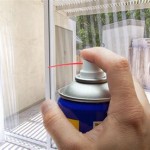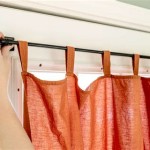Patio Door Lock Replacement Parts: A Comprehensive Guide
Patio doors offer convenient access to outdoor spaces and enhance a home's aesthetic appeal. However, the security provided by these doors is often dependent on the functionality of their locking mechanisms. Over time, wear and tear can compromise these mechanisms, necessitating the replacement of various parts. Identifying the appropriate replacement parts and understanding the replacement process are crucial for maintaining the security and functionality of patio doors.
This article provides a comprehensive overview of patio door lock replacement parts, focusing on different types of locks, common issues, identification of necessary components, and guidance on the replacement process. It aims to equip homeowners and maintenance professionals with the knowledge required to address patio door lock issues effectively.
Types of Patio Door Locks
Patio doors employ a variety of locking mechanisms, each with its own set of replacement parts. Familiarity with these different types is essential for accurate identification and repair.
Hook Locks: These locks feature a hook-shaped bolt that engages with a strike plate on the door frame. They are commonly found on sliding patio doors and offer a reasonable level of security. Replacement parts typically include the hook bolt itself, the cylinder, the handle, and the strike plate. Damage to any of these components can compromise the lock's effectiveness.
Mortise Locks: Mortise locks are more robust than hook locks and are often found on hinged patio doors or higher-end sliding doors. They are characterized by a rectangular lock body that fits into a mortise (a cavity) cut into the door's edge. Replacement parts for mortise locks can include the lock body, cylinder, handle, strike plate, and associated levers or connecting rods. These locks often require more complex repairs compared to hook locks.
Multi-Point Locks: These locks are designed to secure the door at multiple points along its height, offering enhanced security and resistance to forced entry. They are typically found on French doors and some high-end sliding doors. Replacement parts can include the main lock body, connecting rods, locking bolts (located along the door's edge), handle, cylinder, and strike plates. Repairing multi-point locks can be intricate, often requiring professional assistance.
Keyed Cylinders: Regardless of the primary locking mechanism, a keyed cylinder is often used to operate the lock from the exterior. These cylinders can be replaced independently if the existing cylinder is damaged or if the keys are lost. Replacement cylinders are available in various brands and security levels, allowing for customization and enhanced security.
Handle Sets: The handle set provides the user interface for operating the lock. It typically includes an exterior handle, an interior handle, and the necessary hardware to connect these to the locking mechanism. Handle sets can become worn or damaged over time, necessitating replacement. When selecting a replacement handle set, it's important to ensure compatibility with the existing lock mechanism and door thickness.
Common Patio Door Lock Problems
Identifying the specific issue affecting the patio door lock is the first step in determining which replacement parts are needed. Some common problems include:
Sticking or Binding: This is a common issue that can be caused by misaligned components, dirt or debris accumulation, or a worn locking mechanism. Before replacing parts, cleaning and lubricating the lock may resolve the problem. However, if the issue persists, it may indicate a bent or damaged bolt, strike plate, or cylinder.
Key Difficulties: If the key is difficult to insert, turn, or remove, the cylinder may be worn, damaged, or obstructed by debris. Lubricating the cylinder with graphite lubricant may provide a temporary solution. However, if the problem persists, replacing the cylinder is often necessary. In some cases, the key itself may be worn or damaged and require replacement.
Broken Handle: A broken handle can render the lock inoperable. Handles can break due to stress, corrosion, or physical impact. Replacing the handle set is usually the best solution, ensuring that the new handle is compatible with the existing lock mechanism.
Loose or Wobbly Handle: A loose handle indicates that the connecting screws or hardware have come loose or that the handle itself is damaged. Tightening the screws or replacing the hardware may resolve the issue. If the handle is damaged, replacing the entire handle set may be required.
Lock Not Engaging: If the lock does not engage properly, the bolt may be misaligned with the strike plate, or the locking mechanism may be damaged. Adjusting the strike plate or cleaning the bolt path may resolve the issue. If the problem persists, the locking mechanism itself may need to be replaced.
Worn or Damaged Strike Plate: The strike plate is the metal plate on the door frame that the bolt engages with. Over time, the strike plate can become worn, damaged, or misaligned, preventing the lock from functioning properly. Replacing the strike plate is a relatively simple repair that can significantly improve the security of the door.
Identifying and Sourcing Replacement Parts
Once the type of lock and the nature of the problem have been identified, the next step is to identify and source the correct replacement parts. This can be achieved through several methods:
Visual Inspection and Measurement: Closely examine the existing parts to identify any distinguishing features, such as brand names, model numbers, or unique dimensions. Measure the length, width, and thickness of the parts to ensure compatibility with the replacement components.
Manufacturer Identification: Identifying the manufacturer of the patio door or the lock itself can significantly simplify the search for replacement parts. The manufacturer's website or customer service department may be able to provide detailed information about available parts and compatibility.
Home Improvement Stores: Major home improvement stores typically stock a wide range of patio door lock replacement parts. These stores often have knowledgeable staff who can assist in identifying the correct parts and provide guidance on installation.
Online Retailers: Online retailers offer a vast selection of patio door lock replacement parts, often at competitive prices. However, it's crucial to carefully review product descriptions, specifications, and customer reviews to ensure compatibility and quality. Before making a purchase, verify the retailer's return policy in case the part is incorrect or does not fit properly.
Locksmiths: Locksmiths are experts in door hardware and security systems. They can accurately diagnose lock problems, identify the necessary replacement parts, and provide professional installation services. While locksmith services may be more expensive than DIY repairs, they offer the assurance of quality workmanship and reliable results.
Specialty Hardware Suppliers: Specialty hardware suppliers cater to specific types of doors and windows and often carry obscure or hard-to-find replacement parts. These suppliers may be particularly helpful for older or custom-built patio doors.
When selecting replacement parts, prioritize quality and compatibility. Opt for parts made from durable materials, such as stainless steel or brass, to ensure long-lasting performance. Double-check the dimensions and specifications of the replacement parts to ensure that they are compatible with the existing door and locking mechanism. Incompatible parts can lead to installation difficulties and compromised security.
Replacing Patio Door Lock Components: A Step-by-Step Approach
The process of replacing patio door lock components can vary depending on the type of lock and the specific part being replaced. However, the following general steps apply to most replacement projects:
Gather Tools and Materials: Before starting the replacement process, gather all the necessary tools and materials. These may include screwdrivers (Phillips head and flathead), pliers, a measuring tape, a utility knife, a drill (with various bits), safety glasses, and work gloves. Having all the tools readily available will streamline the process and minimize delays.
Remove the Old Components: Carefully remove the old or damaged components. Start by loosening any screws or fasteners that secure the parts to the door or frame. If the parts are stuck or corroded, use a penetrating lubricant to loosen them. Take care not to damage the surrounding surfaces during the removal process. Note the orientation and position of the old parts to facilitate the installation of the replacement components.
Prepare the Installation Area: Clean the installation area to remove any dirt, debris, or old adhesive. Ensure that the surfaces are smooth and free of obstructions. If necessary, use a utility knife to trim any excess material or adjust the fit of the replacement parts.
Install the New Components: Carefully install the new components, following the manufacturer's instructions. Align the parts properly and secure them with screws or fasteners. Avoid overtightening the screws, as this can damage the parts or strip the threads. Ensure that all the components are properly aligned and that the locking mechanism operates smoothly.
Test the Lock: After installing the new components, thoroughly test the lock to ensure that it functions properly. Open and close the door several times, and engage the lock from both the interior and exterior. Verify that the bolt engages securely with the strike plate and that the door is properly secured. If the lock does not function properly, re-examine the installation and make any necessary adjustments.
Lubricate the Lock: Lubricate the lock mechanism with a suitable lubricant, such as graphite lubricant or silicone spray. This will help to ensure smooth operation and prevent corrosion. Avoid using oil-based lubricants, as these can attract dirt and debris.
For mortise locks and multi-point locks, the replacement process can be more complex and may require specialized tools or knowledge. If you are not comfortable performing the replacement yourself, it is advisable to seek professional assistance from a qualified locksmith.
Regular maintenance, including cleaning and lubrication, can extend the lifespan of patio door locks and prevent many common problems. By proactively addressing issues and replacing worn or damaged parts, homeowners can ensure the security and functionality of their patio doors for years to come.
Sliding Patio Door Lock Sets Mortise Locks Replacement Parts All Brands Pella Marvin Truth Entrygard Andersen Biltbest Window

Mortise Lock Mortice Replacements For Patio Doors Sliding Inswing Outswing Marvin Pella Andersen Peachtree Biltbest Pgt Alenco Window Parts

Andersen Door Handle For Hinged Patio Tribeca Hardware Kit Non Keyed

Old Model Patio Door Replacement Parts Locks Handles All Window Group

Sliding Door Hardware Parts Glass Gliding Patio All About Doors Windows

Common Mortise Lock Vertical Slot Metal Sliding Patio Doors W F St
All Brands Patio Door Parts Locks Handles And Biltbest Window
Handle And Locking Hardware For Hinged Inswing Outswing Patio Doors

Pella Patio Door Handle Kit Thermastar Vinyl Sliding White

Prime Line Sliding Glass Door Handle Set 3 1 2 In Diecast And Wood Black Hook Style Internal Lock C 1095 The Home








